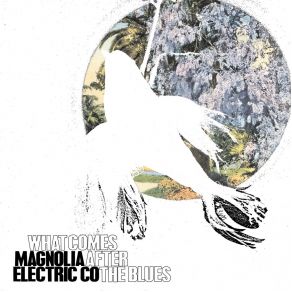What Comes After the Blues
Download links and information about What Comes After the Blues by Magnolia Electric Co.. This album was released in 2005 and it belongs to Rock, Indie Rock, Country, Alternative Country, Alternative genres. It contains 8 tracks with total duration of 36:02 minutes.

|
|
|---|---|
| Artist: | Magnolia Electric Co. |
| Release date: | 2005 |
| Genre: | Rock, Indie Rock, Country, Alternative Country, Alternative |
| Tracks: | 8 |
| Duration: | 36:02 |
| Buy it NOW at: | |
| Buy on iTunes $7.92 | |
| Buy on Amazon $7.92 | |
Tracks
[Edit]| No. | Title | Length |
|---|---|---|
| 1. | The Dark Don't Hide It | 4:14 |
| 2. | The Night Shift Lullaby | 4:33 |
| 3. | Leave the City | 4:28 |
| 4. | Hard To Love a Man | 4:18 |
| 5. | Give Something Else Away Every Day | 4:57 |
| 6. | Northstar Blues | 5:08 |
| 7. | Hammer Down | 2:41 |
| 8. | I Can Not Have Seen the Light | 5:43 |
Details
[Edit]Following quickly from the live Trials & Errors is What Comes After the Blues, the studio debut of Jason Molina's Magnolia Electric Co. And what comes after that comparatively boisterous live set is a record of quiet fire, fueled by an electric/acoustic guitar dynamic and the determined waver in Molina's vocals, which have strengthened considerably since Songs: Ohia. Strengthened yes, but Molina hasn't lost that melancholy tinge. On What Comes After he's a man resigned to what he must do, yet unable to remove from his voice a wavering mix of fear, anger, and regret. "Now the world was empty on the day when they made it," he sings over the ramble of opener "Dark Don't Hide It." "And heaven needed some place to throw all the sh*t." But as down as he is on human darkness, the track softens at the touch of harmonies from Jennie Benford of Jim & Jennie & the Pinetops. (Benford takes the lead for the weary folk lament "Night Shift Lullaby.") "Leave the City" is his goodbye to Chicago, his adopted home and, with Steve Albini, where the album was recorded. A winnowing trumpet joins its shuffling country-rock rhythm, and Neil Young's "Heart of Gold" drifts in the margins of Molina's bittersweet self-examination. The full band really makes its mark on "Hard to Love a Man," where Wurlitzer, violin, and the bass' deliberate plodding put a haunting weight on Molina's Palace-ish vocal. And the violin returns on "Northstar Blues" to color its slight acoustic strums with something more than just the blues. Because the answer to What Comes After the Blues' titular suggestion seems to be a blend of ruminating melodrama, comfortable instrumentation, and threads of American musical tradition from creaky blues and mournful folk all the way to sedate indie balladry and the steady hand of classic rock radio.